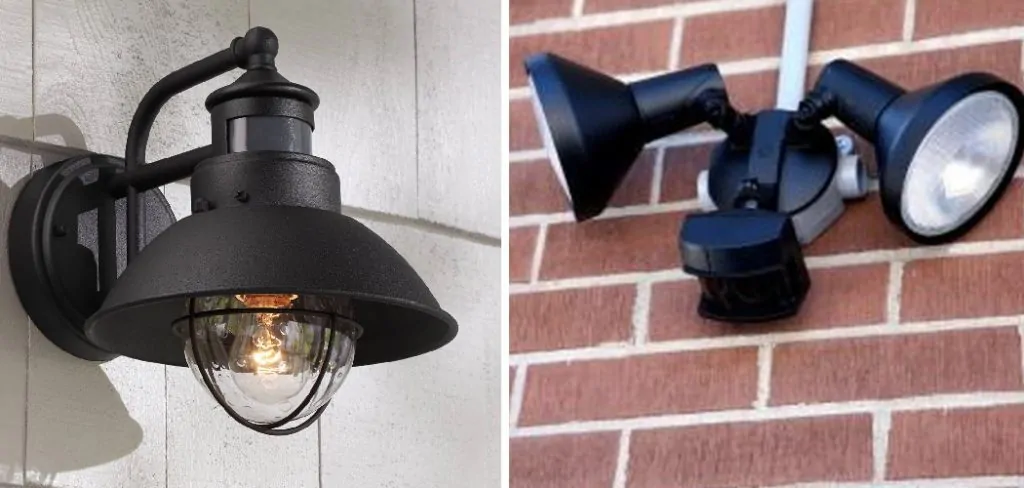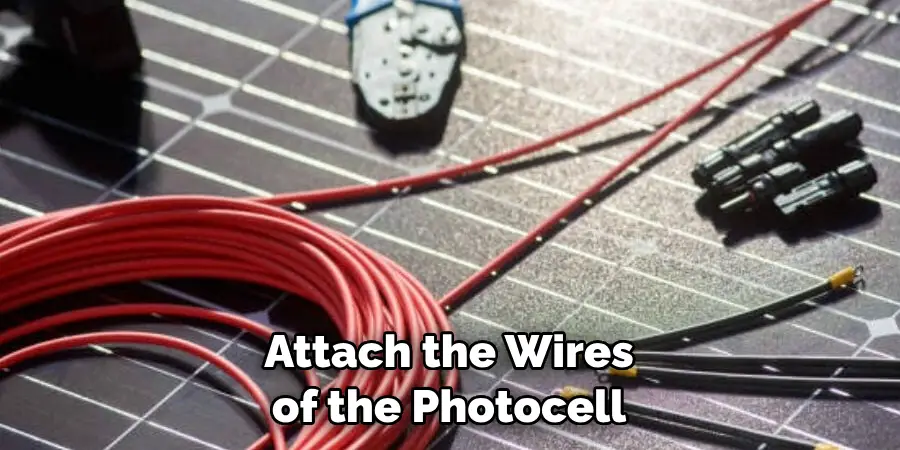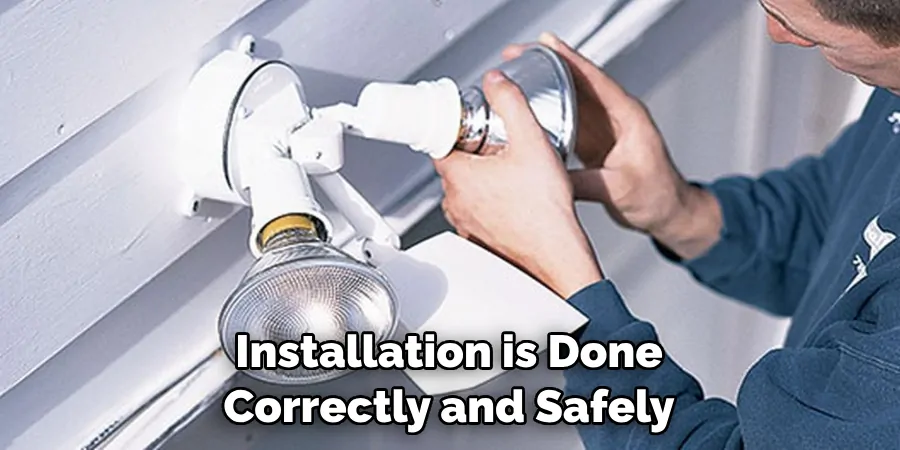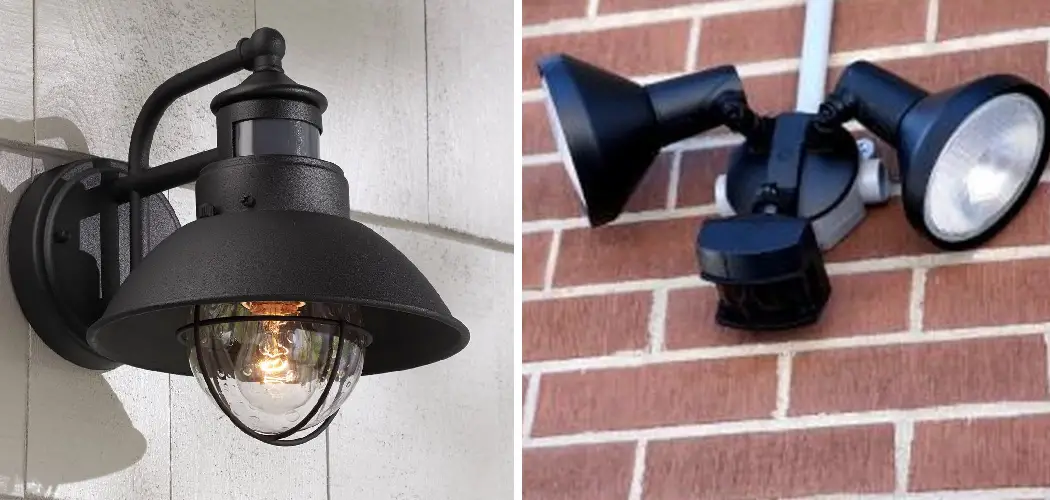Installing a photocell for outdoor light is a simple and effective way to save energy, money, and time. Photocells are tiny sensors that detect when the ambient light decreases beyond a certain point.

When they do so, they automatically switch on any connected lighting fixtures. This can be especially beneficial for areas where lights turn on and off often, such as near a playground or park.
Installing a photocell for outdoor lighting can bring numerous advantages. One of the most beneficial aspects is energy savings. You can reduce your electricity bill by automatically turning lights on and off based on the amount of natural light available.
Additionally, photocells are incredibly easy to install and maintain; you won’t have to worry about manually turning your lights on and off. In this blog post, You will learn in detail how to install photocell for outdoor light.
Step by Step Processes for How to Install Photocell for Outdoor Light
Step 1: Inspect the Area
Locate a suitable area for mounting the photocell. Ensure the location receives enough sunlight and is free from any obstructions that may interfere with its operation. Use appropriate tools to mount the photocell securely on a wall or post. Make sure it is properly aligned so that it can receive sufficient sunlight.
Step 2: Connect the Wiring
Attach the wires of the photocell to its power source and connect them to the outdoor light’s circuit breaker and hot wire (black). Connect a ground wire from the photocell directly to a grounding rod or screw in an earth ground. This will keep the photocell safe in case of lightning or power surges.

Step 3: Connect to the Outdoor Light
Attach the other pair of wires from the photocell to the outdoor light’s neutral (white) and hot (black) wires. Make sure all connections are securely attached and insulated with electrical tape. Depending on your needs, adjust the sensitivity settings of the photocell. This will determine how quickly or slowly it turns on and off when exposed to sunlight.
Step 4: Test the Photocell
Turn on the power and test the photocell’s operation to ensure it is working properly. If necessary, adjust the settings until it functions as desired. Use conduit or other wiring material to cover and protect any exposed wires. This will help avoid interference and accidents caused by touching these wires.
Step 5: Secure the Wiring
Ensure all wiring is secure so it won’t be exposed to weather or traffic. Also, check that the wires are properly insulated and won’t cause any electrical shocks. Now you can enjoy your outdoor light controlled by a reliable photocell! Make sure to test it periodically to make sure it’s working properly and adjust as necessary.
Following these steps, you can easily install a photocell to control your outdoor light. With the right tools and instructions, you can ensure your outdoor light will always be ready to welcome you home.
Safety Precautions for How to Install Photocell for Outdoor Light
- When working with electricity, it is important to ensure all power sources are disconnected or turned off to avoid electric shock hazards.
- Before installing the photocell, check that the mounting location has adequate light exposure and is away from direct sunlight, which can interfere with its function.
- Read and understand the manufacturer’s instructions to ensure proper installation.
- Use a voltage tester to ensure no power is running through the wires before connecting them.
- If you are not experienced in electrical wiring, it is advised to hire a qualified electrician to complete the job safely and correctly.
- Always wear protective gear, such as safety glasses and gloves, when working with electricity.
- After the installation is complete, verify that the photocell is operating correctly and providing power to the light fixture.

By following these steps and safety precautions, you can ensure that a qualified professional installs your outdoor lighting system properly. With a properly installed photocell, you can enjoy the benefits of improved outdoor lighting while keeping your home safe and secure.
What is the Best Way to Test That the Photocell is Working Properly After Installation?
Once you have installed the photocell for your outdoor light, it is important to test that it is working properly. To do this, start by turning on the power source of your light fixture and then covering the photocell part of it with your hand. If the light turns off after a few seconds, you know that the photocell is working correctly.
If the light does not turn off, it could be because the photocell is either not connected properly or wired incorrectly. In this case, you should double-check your wiring and ensure all connections are secure.
If that doesn’t work, you may need to replace the photocell with a new one. Once you have confirmed that the photocell is working properly, it’s a good idea to go outside and check that it responds correctly to the changing light conditions throughout the day.
Do You Need to Contact a Professional Electrician for Assistance With the Installation?
While you can install photocell for outdoor lights yourself, contacting a professional electrician to perform the installation is always recommended. This is because safety precautions need to be taken when dealing with electricity. Furthermore, depending on your local laws and regulations, you may also require an electrician’s license to work with electrical wiring legally.

When you enlist the help of a professional electrician, they will be able to properly identify all the components that need to be connected, check for any potential hazards, and make sure that your outdoor lighting system is wired correctly with the photocell.
They can also offer advice on which type of photocell fits your situation best. In any case, it is always better to be safe than sorry, and getting a professional electrician’s help in installing the photocell can save you from potential dangers or property damage.
How Long Does It Typically Take to Install a Photocell for an Outdoor Light?
Installing a photocell for an outdoor light requires no special skills and can usually be completed by an experienced DIYer in less than half an hour. To complete the installation, you must locate the existing wiring of your outdoor light fixture, turn off the power, disconnect the existing wiring, and connect it to the new photocell switch. Once everything is wired, the power can be turned back on, and the photocell should control your outdoor light fixture.
Make sure to double-check all wiring connections before you turn the power back on, as any loose or improperly connected wires can cause damage to your lighting system or even create a safety hazard. If you are uncomfortable tackling this project yourself, you can always enlist the help of a qualified electrician. Professional installation should take less than an hour and will ensure that your photocell switch is installed securely and correctly.
What Are Some Common Mistakes That Should Be Avoided When Installing a Photocell?
When installing a photocell for outdoor light, it is important to ensure that the installation process is done properly to avoid any potential problems. Common mistakes made when installing the device include not connecting the wires correctly, using the wrong type of wiring, and failing to attach the mounting bracket securely.
It is also important to make sure that the photocell is in the proper orientation and that it is properly shielded from direct sunlight. Additionally, be sure to follow all instructions provided with the device for a successful installation.
By avoiding these mistakes, you can be sure that your outdoor lighting setup will run efficiently and safely. If you are unsure of how to install a photocell for outdoor light, it is always best to consult a professional.

This will ensure that the installation is done correctly and safely and that any potential problems are avoided. Additionally, a professional can provide helpful advice and guidance if there are any questions or concerns about the device.
Is There Any Maintenance Required After the Installation is Complete?
Once you have finished installing the photocell for your outdoor light, little to no maintenance is required. It is important to keep an eye on it in case of any obvious damage or signs of wear and tear. With proper installation, the photocell will last for many years with no issues.
However, if you notice any problems like a flickering light or an unexpected change in the lighting, you should check the photocell to ensure it is operating properly. You may also need to clean any dirt or debris from the photocell.
It is also important to periodically test the photocell’s operation by manually turning off and on your outdoor light during different times of the day. This will ensure that your photocell correctly senses when it is dark and then activates the light at the right time.
If you notice any changes in performance, make sure to adjust the sensitivity level of the photocell as needed. Overall, installing a photocell for outdoor light is a relatively simple process requiring little to no maintenance or upkeep after the installation is complete.
Conclusion
One of the main disadvantages of installing a photocell for an outdoor light is cost. Photocells can be more expensive than traditional timer switches, so they may not fit into some people’s budgets. Additionally, if the photocell malfunctions or turns on lights when needed, replacing it can also be costly.
In conclusion, installing a photocell for outdoor light is a simple project that can be completed in a few steps. It requires basic electrical knowledge and the right materials to complete the job correctly.
By following these steps, you should have your outdoor lights connected up and running with their own automatic lighting system. I hope this article has been beneficial for learning how to install photocell for outdoor light. Make Sure the precautionary measures are followed chronologically.

